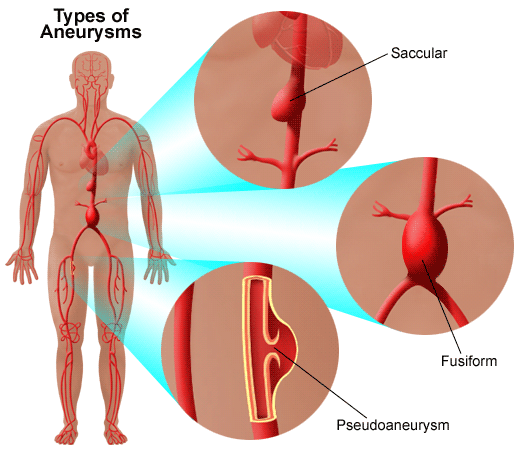Vascular Aneurysm Treatment

Understanding Vascular Aneurysms and Treatment Options
A vascular aneurysm is a dangerous yet often silent condition involving a bulge or ballooning in the wall of a blood vessel. While some aneurysms remain stable for years, others can expand, rupture, and cause life-threatening internal bleeding. The most vulnerable areas include places where arteries branch off—regions exposed to high blood pressure and turbulent blood flow. Early diagnosis and proper vascular aneurysm treatment are essential to prevent catastrophic outcomes.
What is a Vascular Aneurysm?
A vascular aneurysm occurs when part of an artery wall weakens, allowing it to abnormally enlarge or balloon. This weakening is typically due to a combination of genetic, lifestyle, and medical factors. While aneurysms can occur in any blood vessel, they are most commonly found in the:
Brain (cerebral aneurysm)
Abdominal aorta (abdominal aortic aneurysm or AAA)
Thoracic aorta (thoracic aortic aneurysm)
Peripheral arteries (including legs and spleen)
Neck arteries (carotid artery aneurysms)
These aneurysms may go unnoticed until they grow large or rupture. If untreated, a ruptured aneurysm can lead to massive internal hemorrhage, stroke, or even sudden death.
Causes and Risk Factors
There are several causes and risk factors associated with aneurysms. Genetic predisposition plays a major role; individuals with connective tissue disorders may be more prone to aneurysm formation. Other contributing factors include:
High blood pressure: Exerts constant pressure on arterial walls
Atherosclerosis: Plaque buildup weakens blood vessel integrity
Smoking: A major contributor to vascular damage
Infections: Such as syphilis or endocarditis, which weaken vessel walls
Trauma or injury: Direct damage to blood vessels
Age and gender: Older adults and males are more at risk
Because aneurysms are often asymptomatic, routine vascular checkups—especially for individuals over 60 or with high-risk profiles—are critical. Dr. Shashidhar K P, a leading vascular surgeon, specializes in the diagnosis and vascular aneurysm treatment in Bangalore, providing patients with timely, effective care.
Symptoms to Watch For
Although many aneurysms are silent, some show symptoms as they enlarge or press on surrounding structures. Symptoms may include:
Localized pain (e.g., abdominal or back pain in AAA)
Sudden, severe headaches (for brain aneurysms)
Pulsating lumps (in peripheral aneurysms)
Shortness of breath, hoarseness, or coughing (in thoracic aneurysms)
Weakness or numbness in limbs (if nerves are affected)
A ruptured aneurysm leads to sudden, sharp pain, fainting, low blood pressure, and may result in death without emergency care.
Diagnosis of Vascular Aneurysms
Early diagnosis plays a pivotal role in determining the appropriate course of vascular aneurysm treatment. The following imaging techniques are commonly used:
Ultrasound: Particularly useful for abdominal aneurysms
CT Angiography (CTA): Provides detailed 3D images of blood vessels
MRI/MRA: Used to evaluate cerebral or thoracic aneurysms
Catheter angiography: Allows real-time visualization of blood flow
Dr. Shashidhar K P utilizes the most advanced imaging modalities to ensure accurate diagnosis and risk assessment for all patients seeking vascular aneurysm treatment in Bangalore.
Treatment Options for Vascular Aneurysms
Once an aneurysm is diagnosed, the treatment plan depends on its size, location, and risk of rupture. The two primary approaches are:
1. Open Surgical Repair
Open repair is the traditional treatment method, especially for large or ruptured aneurysms. During this procedure:
A large incision is made to access the aneurysm.
The affected portion of the artery is replaced with a synthetic graft.
Blood flow is redirected through the graft to prevent rupture.
This method is effective but involves longer recovery times. It’s typically recommended for patients in good health with aneurysms that cannot be treated using endovascular techniques.
2. Endovascular Aneurysm Repair (EVAR)
EVAR is a minimally invasive vascular aneurysm treatment technique. It involves:
Small incisions in the groin
Catheters used to guide a stent-graft through the blood vessels
Placement of the stent inside the aneurysm to reinforce the vessel wall
EVAR reduces hospital stays, recovery time, and post-operative complications. It’s especially useful for patients who are elderly or have co-morbidities that make open surgery risky.
Dr. Shashidhar K P is a pioneer in performing both open and endovascular aneurysm repair, offering patients the most suitable and safest treatment pathway. His expertise in vascular aneurysm treatment in Bangalore ensures world-class care close to home.
Recovery and Follow-Up
Recovery depends on the treatment type and patient health. Open surgery may require several weeks of healing, while EVAR patients often resume daily activities within a few days. Long-term follow-up is crucial to:
Monitor the stability of the graft or stent
Detect recurrence or enlargement
Manage risk factors like hypertension and smoking
Patients under the care of Dr. Shashidhar K P receive comprehensive post-treatment guidance, regular monitoring, and lifestyle advice to ensure optimal recovery and long-term health.
Conclusion
Vascular aneurysms are serious conditions that demand timely attention and expert care. Whether you are at risk or have been diagnosed, it’s vital to consult an experienced vascular surgeon. Dr. Shashidhar K P offers advanced and individualized vascular aneurysm treatment in Bangalore, using the latest surgical and endovascular techniques. Early intervention can make the difference between life and death—don’t wait for symptoms to become severe.
Save time, Save money, Be Healthy and Happy !
We can be your guide in the world of Vascular and Endovascular
Surgery!
Save time, Save money, Be Healthy and Happy !
We can be your guide in the world of Vascular and Endovascular
Surgery!
